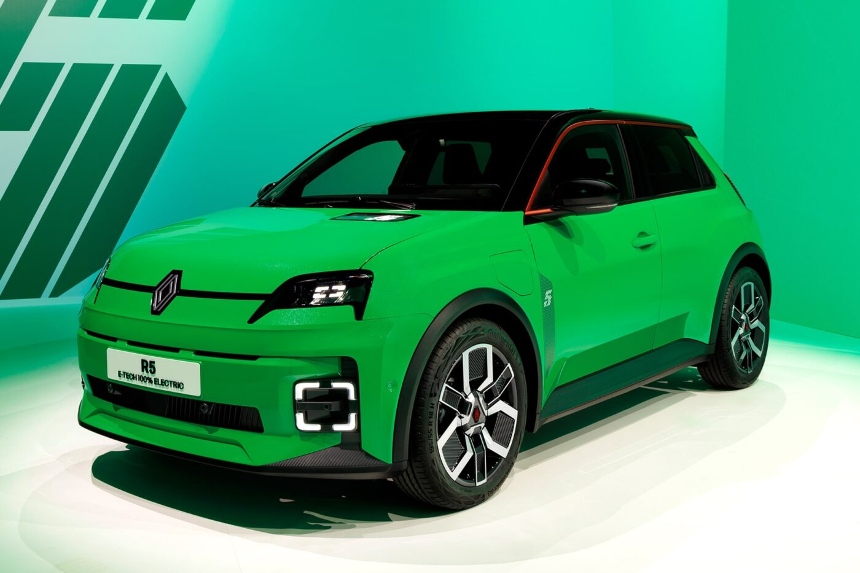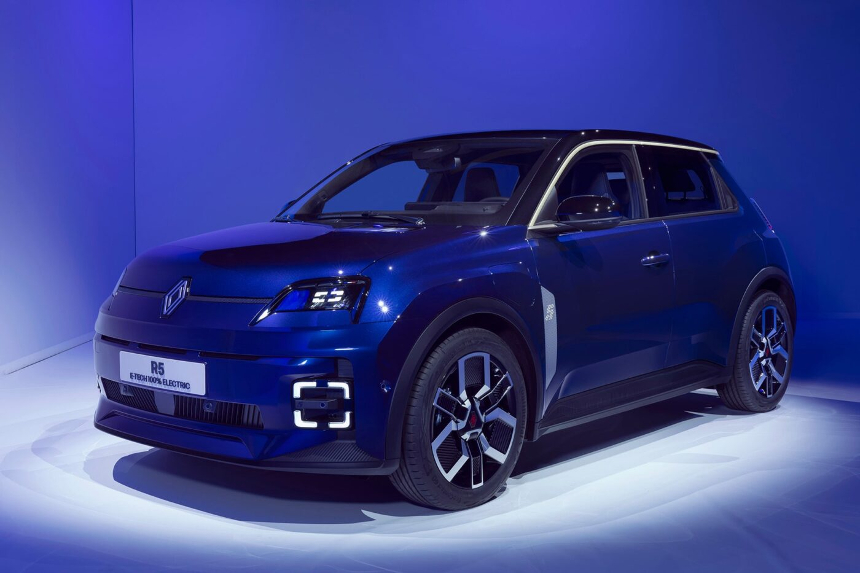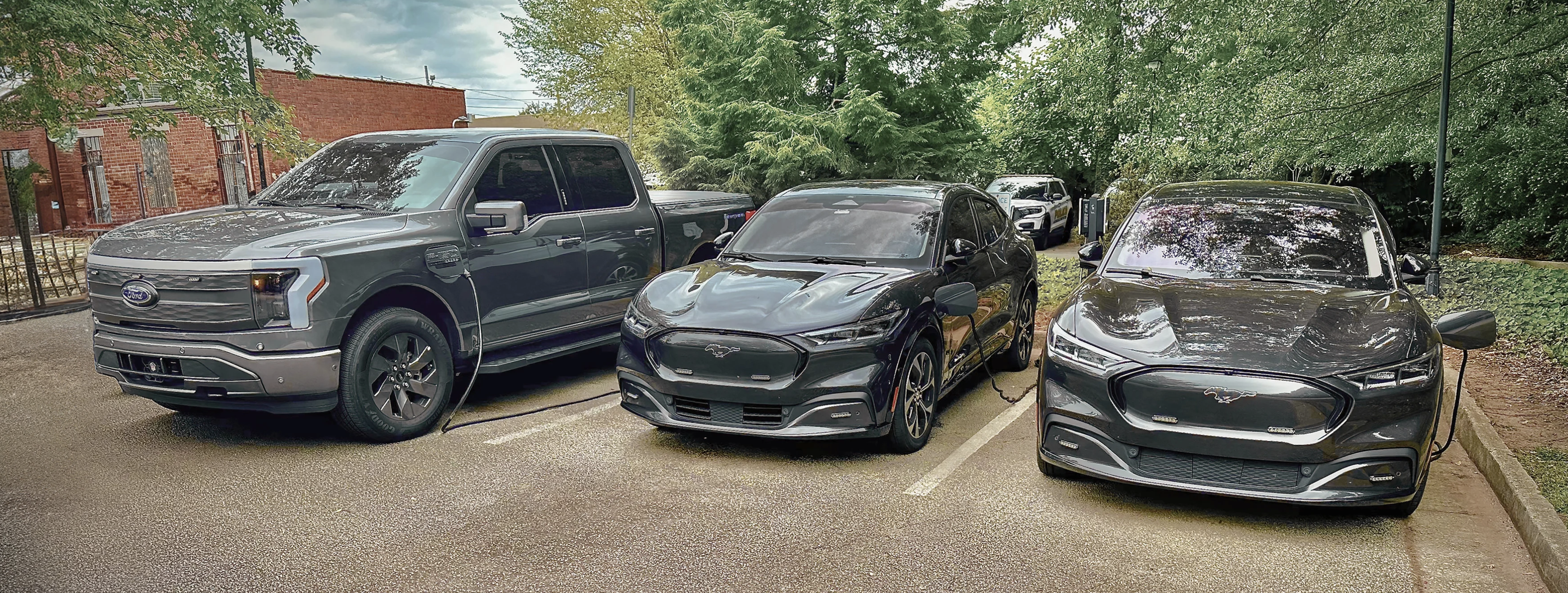Sign up for daily news updates from CleanTechnica on email. Or follow us on Google News!
Three years ago, Renault started working on a battery-electric version of its iconic Renault 5, a car that was the best selling car in France for 14 years from 1972 to 1986. The original was a typical French car like the Citroen 2 CV. It was basic transportation with a supple suspension designed to tame France’s notoriously bumpy rural roads. It had front-wheel drive and could be had in either a three-door or five-door version. The Renault 5 was marketed in North America as Le Car from 1976 to 1983 when people were hungry for fuel efficient cars after the Arab oil embargoes.
Even though the Renault 5 was primarily a utilitarian, no frills people mover, there were those within the company who saw an opportunity to make it something quite the opposite. They shoehorned a 1.4 liter turbocharged 158 hp engine into the space behind the front seats, widened the rear axle about two feet, and unleashed one of the most potent super-mini street legal pocket rockets ever.
Renault 5 E-Tech Electric On Sale This Fall
The world has moved on since the 70s, but Renault (pronounced REN-oh) hasn’t forgotten what was once its best selling car. Today, it has unveiled the production version of the Renault 5 E-Tech Electric, a battery-electric re-imagining of the original. Squint a little and the lines of the R5 are still there, but the new car is thoroughly updated for today’s drivers and driving conditions. it is a battery-powered 5-door car with room for 5 passengers (sort of) and their stuff.
Autoblog says the unique exterior design is meant to evoke memories of the original Renault 5 while modernizing the look for a younger, modern audience. It welcomes the driver with an animated light sequence, and the “pupil” LED headlights appear to be winking. The car has been optimized for maximum aerodynamic efficiency, including special glass panels that help smooth the flow of air over the taillights.
Built On AmpR Small Platform

According to Electrive, the Renault 5 E-Tech Electric is the first vehicle to use the company’s new AmpR Small platform. The car is 3.92 meters long by 1.77 meters wide, stands 1.5 meters high, and has a wheelbase of 2.54 meters. It will come with a choice of three electric motors and two battery sizes.
When deliveries start later this year, the car will be available only with the larger battery — 52 kWh battery (net) — and a motor rated at 110 kW (150 hp). Variants with a 40 kWh battery and electric motors with 90 and 70 kW respectively will follow later. Both batteries contain prismatic NMC cells from Renault’s battery partner AESC. According to Renault, both the vehicles themselves and the batteries will be manufactured in northern France.
The AmpR Small platform enables AC bidirectional charging with vehicle-to-load and vehicle-to-grid functionality in the 90 and 110 kW models. The 70 kW model has one way AC charging only. The other two can accept up to 100 kW of DC fast charging power and have a bi-directional 11 kW AC charger built in. Renault said it envisions those cars playing a role in the overall power grid, returning electricity when needed. Charging times using a fast charger are expected to be 30 minutes from 15 to 80% SOC and 4.5 hours to recharge the larger battery via the onboard 11 kW AC charger.
 Chip in a few dollars a month to help support independent cleantech coverage that helps to accelerate the cleantech revolution!
Chip in a few dollars a month to help support independent cleantech coverage that helps to accelerate the cleantech revolution!
Depending on the battery size, Renault claims a range of 400 km (249 miles) WLTP for cars equipped with the larger battery and 300 km (185 miles) for cars with the smaller battery. The company says the starting price of the Renault 5 E-Tech Electric will be €25,000 ($27,350) although that is probably for the smaller battery and least powerful motor. More pricing details will emerge as the beginning of deliveries gets nearer. The company claims a top speed at 150 kph (95 mph) and acceleration from 0 to 100 km/h in under eight seconds.
The Renault 5 E-Tech Electric will be available in three trim levels — Evolution, Techno and Iconic Five — although only the two higher trim levels will initially be available for the launch this fall. The standard color for Techno is bright green including glitter effect. If you want more subtle exterior colors, you pay extra. A bright yellow color is also available, as well as white, black, and midnight blue. From the Techno level upwards, a two-tone paint finish with a black roof is an option.

The interior has a pop art style with denim seat upholstery. In the Techno version, this fabric can also be found on the dashboard and on the door panels. In the Iconic trim, the seats are in grey and yellow. Renault creates further customization options with 3D-printed accessories, including a bread basket for baguettes that can be attached to the center console. (If you wonder why a car would need a baguette holder, you need to spend more time in France.) There is also room for personalization on the outside with optional stickers for the roof and front doors.
A car that comes in bright green and yellow cannot have a dull, uninteresting interior. Sacre bleu! There is a digital instruments screen behind the steering wheel with a 10-inch touchscreen in the center of the dashboard (above the baguette holder, one presumes). That screen becomes only 7 inches in the entry-level version. In the Techno and Iconic Five trim levels, the touchscreen is coupled with an OpenR Link system that includes Google Services. Electrive suggests that legroom for rear seat passengers is quite restricted.
People who remember the R5 will recognize several design features in the interior. The seats are borrowed from the R5 Turbo, the quilted roof lining and the padded glove compartment area are from an early Renault 5 generation, as is the rectangular instrument cluster with rounded edges.
18-inch wheels, a hands-free system, compatibility with Android Auto and Apple CarPlay, an electric handbrake, and full LED headlights with high beam assist are standard on all versions of the car. When Renault talks about a price “from 25,000 euros,” that is probably for the de-contented entry level models. The better equipped variants are likely to be more expensive, Electrive says. The Techno version is equipped as standard with alloy wheels, a reversing camera, an inductive smartphone charging area, a SOC indicator integrated into the hood, and adaptive cruise control. The Iconic Five adds heated seats and a heated steering wheel.
Three Years From Design To Production
Renault CEO Luca de Meo describes the Renault 5 E-Tech Electric as a car unlike any other. “Its release coincides with a major shift by millions of Europeans towards new mobility which is electric, connected, and sustainable. It also triggered the transformation of Renault Group into a next-generation automotive company.”
In order to develop this car to such a high technological level in just three years in France, it was necessary to be disruptive in all decisions and as agile as possible in the organization, De Meo said. “Only an iconic car could bring our teams together in this way and move the needle internally. In the face of significant change in our industry, this car paves a new way for Renault. It’s at the heart of the battle to reinvent European industry against competition coming from the East and the West.”
We have chosen not to do most of the conversions from metric to US specs in this article because the odds of this car coming to North America are similar to those those of the Titanic spontaneously rising from the seabed to float once more. Most Americans would have zero interest in this car, which is designed primarily for European driving conditions. For everything you ever wanted to know about the Renault R5 E-Tech Electric, watch the Top Gear video below.
Have a tip for CleanTechnica? Want to advertise? Want to suggest a guest for our CleanTech Talk podcast? Contact us here.
Latest CleanTechnica TV Video
I don’t like paywalls. You don’t like paywalls. Who likes paywalls? Here at CleanTechnica, we implemented a limited paywall for a while, but it always felt wrong — and it was always tough to decide what we should put behind there. In theory, your most exclusive and best content goes behind a paywall. But then fewer people read it!! So, we’ve decided to completely nix paywalls here at CleanTechnica. But…
Thank you!
CleanTechnica uses affiliate links. See our policy here.




